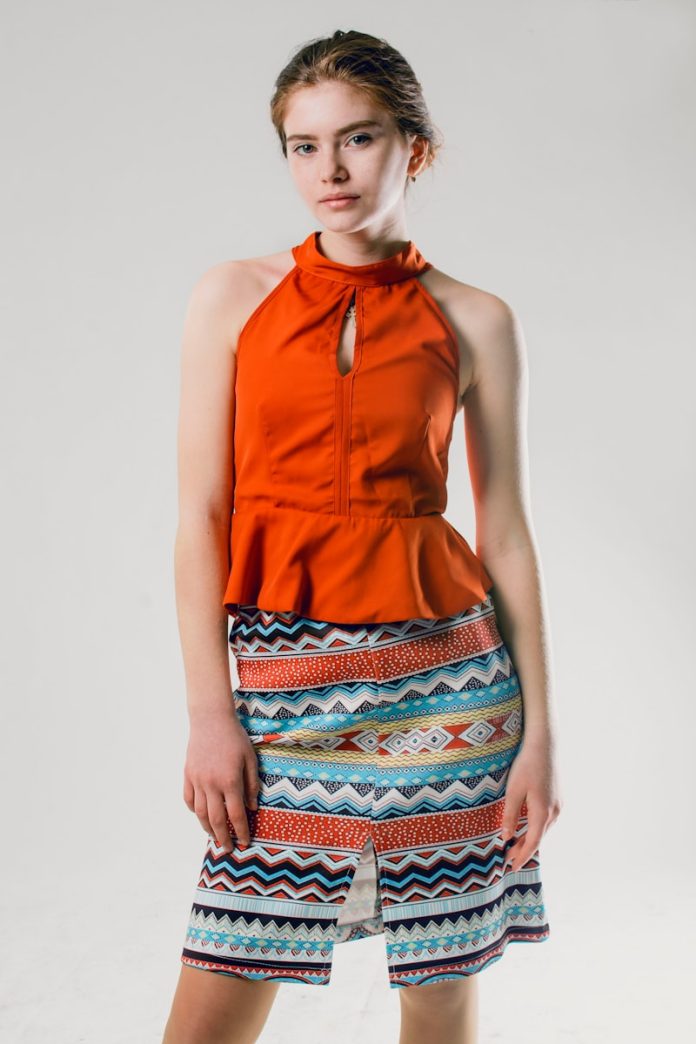Fashion is constantly evolving, with trends shifting every season. Yet, some styles stand the test of time, transcending fleeting trends and becoming iconic staples in wardrobes across the globe. One of the most enduring trends is the concept of neutral colors in fashion. These shades serve as the foundation of versatile and timeless wardrobes, easily paired with bolder accents or worn for their understated elegance. Over the years, the definition of “neutral” has expanded, and in recent seasons, we’ve witnessed a shift towards more subtle, nuanced shades that continue to dominate the fashion landscape.
In this essay, we’ll explore how these new subtle shades—soft pastels, muted tones, and earthy hues—are redefining the notion of neutrals, offering fresh takes on the classic idea of simplicity and sophistication in fashion. These nuanced neutrals are not just understated, but they carry a depth of character, texture, and warmth that make them perfect for creating a modern yet timeless wardrobe. We will delve into the reasons behind the growing popularity of these new neutral shades and how they have found their place in both everyday wear and high-fashion runways.
- The Evolution of Neutrals in Fashion
Neutrals have long been synonymous with timeless elegance. The term has traditionally referred to colors like black, white, beige, and gray—hues that are easy to mix and match, providing a base for more vibrant accent colors. These colors are practical and chic, forming the backbone of minimalist and capsule wardrobes. However, as fashion continues to embrace diversity and inclusivity, the palette of neutral shades has expanded to include more subtle and softer hues.
While beige and taupe will always have their place in fashion, contemporary designers have turned to more refined versions of neutrals. Today, neutrals encompass a range of colors, from warm, earthy tones to delicate pastel shades. These new neutral colors offer a sense of depth, texture, and warmth, reflecting an era of fashion that is both luxurious and accessible.
This shift is not only about embracing new colors but also about evolving our understanding of what neutrals can represent. They are no longer just the safe, “go-to” hues. Instead, they symbolize the understated sophistication of the modern era. The subtle shades found in this new neutral palette are approachable yet elegant, making them suitable for any occasion—whether for a day at the office or a night out.
- Soft Pastels: The Rise of Muted Tones
One of the key aspects of the new neutral palette is the rise of soft pastels and muted tones. Traditionally, pastels have been associated with spring and summer, often seen in floral prints or light, airy fabrics. However, in recent years, pastel shades have been redefined, taking on a more muted and sophisticated quality that aligns with the idea of subtlety in modern fashion.
Colors such as pale lavender, dusty rose, and soft mint green are now considered part of the neutral spectrum. These tones bring a sense of tranquility and calmness, offering a break from the more intense and bold colors typically associated with fashion. By using these subtle pastels in wardrobe staples such as blazers, trousers, and skirts, individuals can create soft, yet striking looks that are far from overwhelming.
These pastel neutrals are not just limited to spring and summer; they’ve seamlessly been incorporated into fall and winter collections as well. When paired with darker tones like charcoal gray or deep navy, soft pastels create a contrast that remains gentle but visually dynamic. This versatility makes pastel shades a welcome addition to the modern neutral wardrobe.
- Earthy Tones: Embracing Warmth and Comfort
Alongside soft pastels, earthy tones have become a key element of the new neutral palette. Shades like terracotta, ochre, moss green, and rich brown have gained popularity in recent years, offering a warm, grounded alternative to the cooler, more austere neutrals of the past. These colors evoke a sense of nature, calm, and organic beauty, which resonates with the increasing cultural desire for sustainability and simplicity.
Earthy neutrals have a certain timelessness about them, echoing the hues of the earth itself. They are perfect for creating looks that feel connected to the natural world, whether in a casual daywear outfit or a more structured, professional ensemble. These shades also work wonderfully in layering, allowing for outfits that incorporate multiple tones while still maintaining a sense of cohesion.
What sets earthy tones apart is their ability to create depth and texture in clothing. For example, a warm brown leather jacket or a deep green suede bag can instantly elevate an outfit, adding a touch of sophistication while remaining subtle. Earthy hues have the ability to ground an outfit, providing a feeling of warmth and comfort that resonates on both an aesthetic and emotional level.
- Greys and Charcoals: The New Classics
While greys and charcoals have long been seen as traditional neutrals, their status has been redefined by more recent trends that elevate them to new heights. These colors, often perceived as cold and detached, have been reworked into more inviting, flattering shades that are now considered essential in any neutral wardrobe.
Charcoal gray, for instance, is softer and warmer than its darker counterparts, offering a contemporary alternative to black. It has become a go-to shade for professional attire, from sharp suits to tailored trousers. Its versatility lies in its ability to be both formal and relaxed, making it suitable for everything from business meetings to weekend outings.
Similarly, lighter grays, including dove gray and steel gray, have found a place in the new neutral palette. These softer variations can be paired with a wide range of other colors—both bold and subtle—creating outfits that are balanced and harmonious. Gray is often seen as a neutral that allows other colors to shine, but its own understated elegance makes it a vital part of the modern wardrobe.
- The Role of Textures and Fabrics
The impact of these subtle neutral shades goes beyond just the colors themselves; the fabrics and textures in which they are presented also play a key role in their appeal. Soft pastels and earthy tones, when paired with natural fabrics like linen, cotton, and wool, take on a richness that makes them stand out without being overpowering.
For example, a blush pink blouse in silk or satin catches the light in a way that adds depth to the color, making it feel luxurious and sophisticated. Similarly, a moss green cashmere sweater feels cozy and inviting, enhancing the muted tone with the softness and warmth of the fabric.
Textures and fabrics also play a crucial role in layering these shades. When wearing subtle neutrals, the use of contrasting textures—such as pairing a smooth wool coat with a chunky knit scarf—adds visual interest to an outfit. This not only creates a more dynamic look but also emphasizes the depth and richness of these shades, making them feel luxurious and effortless.
- Sustainability and Subtle Shades: A Perfect Pairing
In recent years, there has been a growing trend toward sustainability in the fashion industry, with an emphasis on creating timeless, durable pieces rather than following fleeting trends. Subtle neutral shades are perfectly aligned with this sustainable ethos, as they are versatile, long-lasting, and timeless.
Colors like earthy browns, soft beiges, and muted pastels can easily transition from season to season, making them ideal for pieces that can be worn year-round. This reduces the need for constantly buying new clothes to follow ever-changing color trends. Additionally, neutral colors are more forgiving when it comes to wear and tear, as they don’t show fading or staining as prominently as brighter, more saturated hues.
As sustainability continues to influence fashion, the new neutral palette encourages conscious consumerism by prioritizing quality over quantity and promoting a style that is enduring rather than ephemeral.
- Subtle Shades for Every Occasion
One of the best aspects of the new neutral colors is their versatility. From casual wear to evening attire, subtle shades can be dressed up or down, making them perfect for any occasion. A pair of beige trousers can easily transition from a day at the office to an evening out with just the right accessories. Similarly, a soft pastel sweater can be paired with a denim skirt for a relaxed weekend look or dressed up with a pencil skirt for a polished office outfit.
These shades also work well when it comes to creating monochromatic outfits, where the combination of different tones and textures within the same color family creates a cohesive, sophisticated look. Whether it’s a taupe dress paired with a dusty rose jacket or a charcoal gray suit worn with a soft dove-gray shirt, the possibilities for subtle, chic looks are endless.



